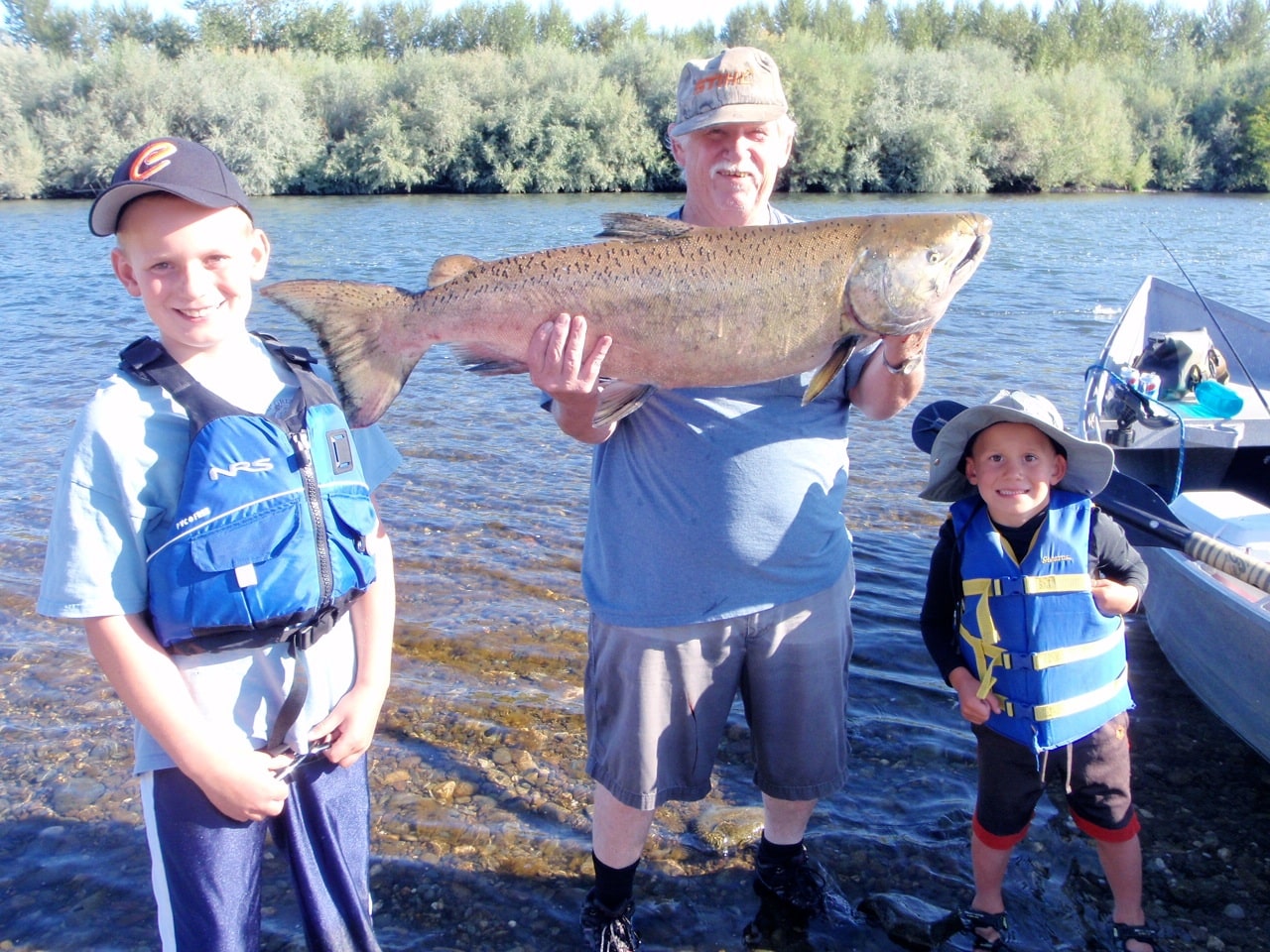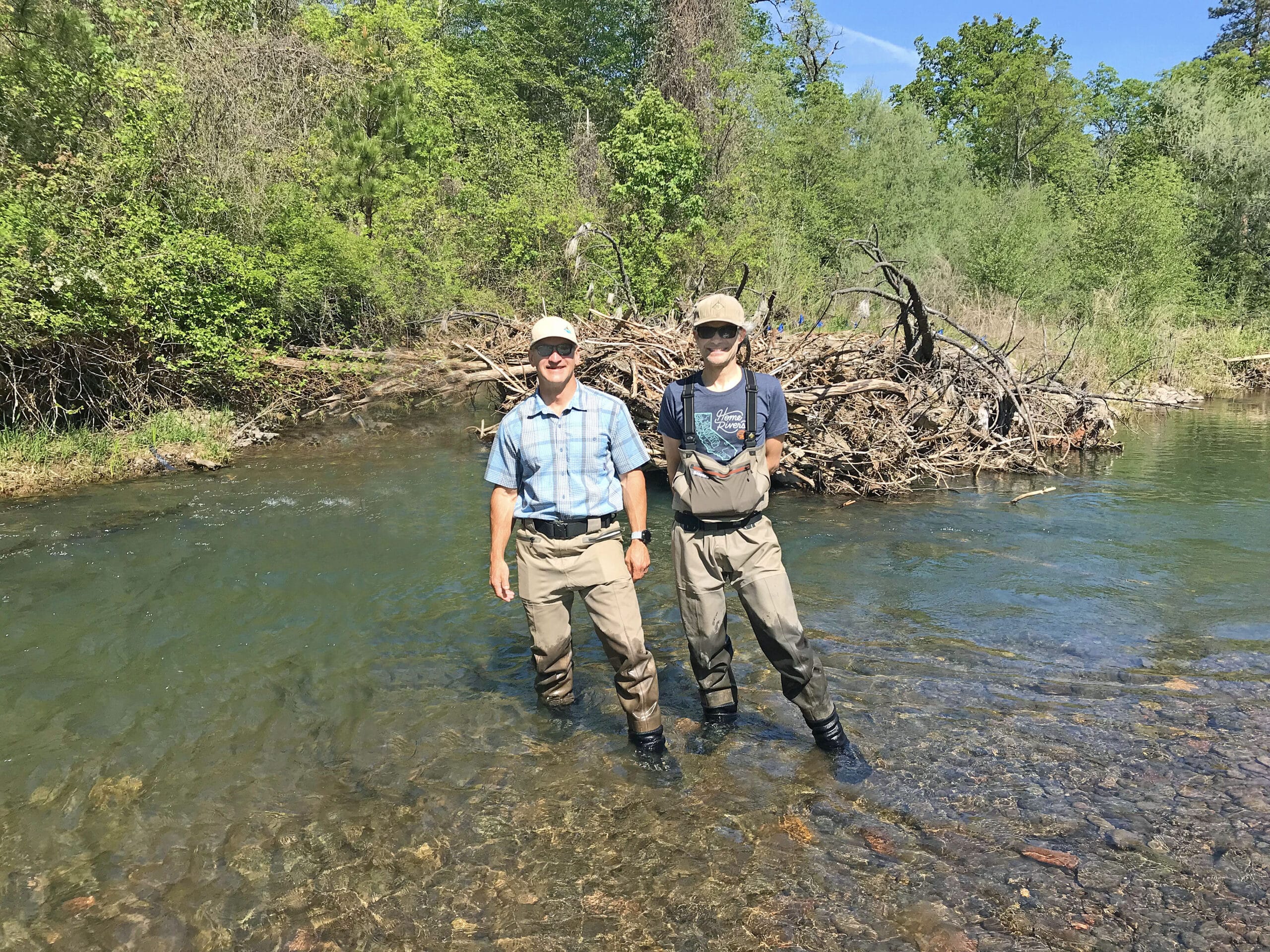Watching the Water with River Design Group
Many days of Scott Wright’s childhood were spent thinking about where the fish were, watching and learning the water.
For a boy growing up in an angling family and in close proximity to world class rivers, like the Rogue, Illinois and Applegate, that’s not so unique.
But few get to say that at 49, they now get paid to do it.
Wright is a principal engineer with River Design Group (RDG), one of the leading river restoration consulting firms in the West, with offices in Montana and Oregon. For two decades, The Freshwater Trust (TFT) has partnered with RDG on the planning and design of multiple restoration projects throughout the state, ensuring that every action taken yields the greatest and longest-term impacts for native fish and water quality.
“Planning these projects is not dissimilar to planning the construction of anything else,” said Mark McCollister, TFT’s habitat restoration director. “You won’t find a strong, lasting house being built without blueprints, and RDG is often called on to help us draw up ours.”
RDG staff have more than 350 years of combined restoration experience on more than 500 restoration design projects. The business offers restoration, assessment, remote sensing, fish passage and dam removal services.
Growing up, Scott watched multiple dams be built in and around his favorite fishing areas of Southern Oregon.
Over the last decade, he’s removed many of the legacy structures he fished around as a child.
“As a kid, I watched dams being built in Southern Oregon, now I’m helping to take dams out and provide a lasting legacy of sound river stewardship,” he said. “In many of these cases, these obstructions had become obsolete, not really serving a purpose or anyone anymore, and hindering the ability of the river and environment to function as they should.”

Scott learned to love rivers from his father (center), and he has since passed that passion down to his two sons (left, right).
TFT and RDG first started working together in 2007 on a plan to benefit the Middle Fork John Day River, the same year Wright opened RDG’s second office in Corvallis, Oregon. Shortly after that, TFT again retained their services to assess restoration opportunities on Rudio Creek, a critical spawning tributary to the North Fork John Day River.
Upon assessment and the development of a restoration design, the team restored more than two miles of Rudio Creek that had once been straightened to create livestock pasture. Meanders to the stream were reinitiated, and large wood was placed to enhance spawning habitat. Adult steelhead now use parts of the creek that were dry for decades.
Since then, more than $2 million in business has been done between the two entities.

RDG's Scott Wright and TFT's Mark McCollister have been working together to fix rivers for over a decade.
RDG has provided planning, design and construction oversight services for projects to benefit the John Day, Rogue, Sandy and Snake River basins.
“Together, we’re a really efficient machine,” said Wright. “We work with many partners, but everyone knows that a project with TFT is going to get done quickly and yield lasting results.”
COVID-19 has not stopped the gears of the efficient machine from turning.
TFT has contracted RDG for several projects this summer, including on the Salmon River and on Bear and Neil Creek in the Rogue.
But like much of the world in the wake of the crisis, future funding for projects, originating from sources such as grants and lottery dollars, could be impacted. According to Wright, one project was cancelled because the revenue for it came from gas taxes, which are down.
“One of the great things about these projects are the intertwined, partnering nature of them – a restoration design agency, working with a nonprofit, working with Tribes, and government agencies,” said McCollister. “But in nature, when you pull on one thing, you’ll find the rest of the world attached. That’s how it is in this world, too. There’s a lot that underpins and makes these projects possible, and the ancillary benefits, or consequences of not doing them, are felt by many more than just the fish.”
The next time Wright and McCollister meet on the river this summer, they’ll probably be wearing masks.
But their waders will be on, and rest assured, their eyes will be on the water.
May 27, 2020Enjoying Streamside?
This is a space of insight and commentary on how people, business, data and technology shape and impact the world of water. Subscribe and stay up-to-date.
Subscribe- Year in Review: 2023 Highlights
By Ben Wyatt - Report: Leveraging Analytics & Funding for Restoration
By Joe Whitworth - Report: Transparency & Transformational Change
By Joe Whitworth - On-the-Ground Action – Made Possible By You
By Haley Walker - A Report Representing Momentum
By Joe Whitworth

